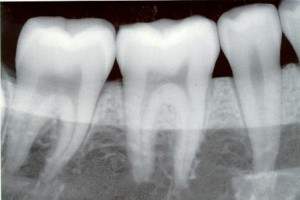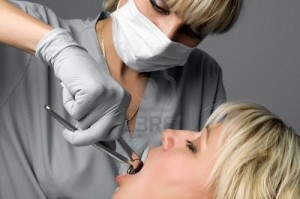The oral lymphoepithelial cyst develops within a benign lymphoid aggregate or accessory tonsil of the oral or pharyngeal mucosa. The surface of such aggregates may be indented with tonsillar crypts, as are the much larger pharyngeal tonsils of the lateral pharyngeal walls. The crypts may become obstructed by keratin or other debris, or the surface opening may become constricted during episodes of inflammatory hyperplastic responses. Certain cases develop a complete disunion of the crypt epithelium from the surface epithelium, resulting in a subepithelial cyst lined by the old crypt epithelium. This cyst was first reported by Parmentier in 1857 as hydatid cyst. Outside of the head and neck region, lymphoepithelial cyst is found most frequently in the pancreas and testis. Continue reading
Radiographic Faults and Artifacts Part 1
THE IDEAL RADIOGRAPH IS THE ONE WHICH SHOWS:
1. Optimum density
2. Optimum contrast
3. Accurate
4. Covers the area of interest completely
When any of the above conditions are not satisfied it may be termed as the faulty radiographs.
Working Length Determination in Root Canal Treatment Part 2
Tear drop silicone – rubber stops have an added advantage because they do not have to be removed form the instrument during sterilization at 4500 F and tear drop tip can be positioned to indicate instrumental curvature
Rubber stops instruments have certain disadvantages like movement of up (or) down the shaft, leading to short (or) past the apical constriction and time consuming.
Dyskeratosis follicularis and its oral manifestations
Darier’s disease, also known as keratosis follicularis or dyskeratosis follicularis, is a rare disorder of keratinization. It is an autosomal dominant genodermatosis with high penetrance and variable expressivity. Its manifestation appears as hyperkeratotic papules primarily affecting seborrheic areas on the head, neck, thorax, and less frequently the oral mucosa. Continue reading
Working Length Determination in Root Canal Treatment Part 1
WORKING LENGTH DETERMINATION
In detail endodontic procedure primarily consists of
-        Access preparation –LA in vital
-Â Â Â Â Â Â Â Â Pulpectomy
-Â Â Â Â Â Â Â Â Working length X-ray
-Â Â Â Â Â Â Â Â Biomechanical preparation (cleaning and shaping)
Chemo-mechanical preparation disinfection
Obturation
Clinical Diagnostic Methods Part 3
Recent advances in diagnostic methods
1. RADIOVISIOGRAPHY
2. XERO – RADIOGRAPHY-
3. PULSE-OXIMETRY:
4. LASER DOPPLER FLOWMETRY
5. COMPUTERISED TOMOGRAPHY
6. DIGITAL SUBTRACTION RADIOGRAPHY
7. MAGNETIC RESONANCE IMAGING
8. COMPUTERISED EXPERT SYSTEM.
9. THERMOGRAPHIC IMAGING.
10. TACT:( TUNED APERTURE COMPUTED TOMOGRAPHY)
Oral Submucous Fibrosis
Oral submucous fibrosis (or OSF) is a chronic, complex, irreversible, highly potent pre-cancerous condition characterized by juxta-epithelial inflammatory reaction and progressive fibrosis of the submucosal tissues (lamina propria and deeper connective tissues). As the disease progresses, the jaws become rigid to the point that the sufferer is unable to open his mouth. The condition is linked to oral cancers and is associated with areca nut chewing, the main component of betel quid. Areca nut or betel quid chewing, a habit similar to tobacco chewing, is practiced predominately in Southeast Asia and India, dating back thousands of years. Continue reading
Clinical Diagnostic Methods Part 2
Radiograph

Radiograph may show the number,
Course,
Shape,
Length,
and width of root canals, the presence of calcified material in the pulp chamber or root canal,
The resorption of dentin originating within the root canal (internal resorption) or from the root surface (external resorption)
Calcification or obliteration of the cavity,
Thickening of the periodontal ligament resorption of cementum,
And nature and extent of periapical and alveolar bone destruction.
Instruments Used for Dental Extraction
As with any other dental procedures, teeth extraction required specific dental instruments to do so. Unlike our baby teeth which could be easily pulled out when they are wobbly or would naturally drop off in their due times, adult teeth are a different matter altogether. Because of their longer root length and stronger surrounding supporting tissues, adult or permanent teeth (or even baby teeth that are not loose) would require certain techniques and dental tools to remove them. Continue reading
Clinical Diagnostic Methods Part 1
Correct treatment begins with a correct diagnosis. Arriving at a correct diagnosis requires
1) Knowledge
2) Â Skill
3) Art
